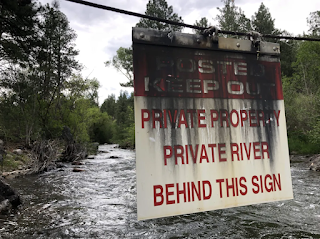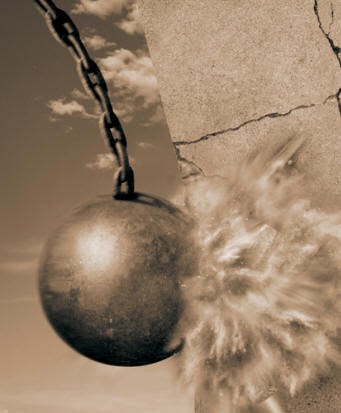Is 3 Waters entrenchment really a stupid idea?
The 2023 elections will potentially be one of the most ideologically divided elections we will experience. The real solutions for most pressing social and environmental issues confronting us at the moment will involve systemic change and will necessarily challenge the neoliberal mindset that has dominated governance over the last four decades. The 3 Waters debate is a good example of how difficult introducing systems change is and how partisan politics limits productive discourse.
Nanaia Mahuta's intent when developing 3 Waters was to address a rapidly growing crisis. The demands on local government to provide clean drinking water and manage human waste and storm water was becoming too great a financial burden. There have been numerous examples of whole communities experiencing serious health consequences because of contaminated drinking water and for some time local authorities have struggled to maintain core water and waste infrastructure from a limited rates base. The status quo would result in increasing health risks and environmental damage.
The 3 Waters journey has been a fraught one. Not working more directly with councils in the early stages, so that sticking points could have been identified, is probably a core reason for the strong reaction. The two main areas of contention are the shifting of locally owned assets and governance authority to four new regional entities and the proposed co-governance with mana whenua.
While there has been a good deal of constructive work on ensuring councils have greater governance input in the new entities, it is Māori co-governance that continues to raise the hackles of conservative farmers (Groundswell) and the ACT Party. However, a new controversy appeared when it was revealed that the bill had included an entrenchment clause that would limit the ability of future governments to privatise water.
Entrenchment clauses are currently only applied to electoral law and ensures that a governing party has to achieve broad consensus and a 75% threshold to progress change. This ensures that a governing party cannot ram through changes that would be in its self-interest rather than supporting sound democratic process.
The Green Party and the Labour Party were concerned that water should remain a public resource and wanted some protection against a future government supporting privatisation. Eugenie Sage was able to get support for an entrenchment clause that would require a 60% threshold. This clause flew under the radar of the opposition parties and when finally exposed created a firestorm. Constitutional experts were concerned that the use of entrenchment for other than electoral law would create a dangerous precedent and any party could then include its use to embed a political agenda. Labour has quickly acted to remove the clause and publicly admit to a mistake.
I believe the knee jerk reaction and the removal of the entrenchment clause was ill-considered.
Over the years we have experienced numerous occasions where a government has rammed through massive change through a slim majority that has had disastrous consequences. Many of these have involved public assets that provide a core service or infrastructure. It makes sense to set a higher bar to protect public assets from the extreme ideological whims of a governing party with minimal mandate.
I present three examples of where a 60% entrenchment clause may have benefited our country if it been applied at the time neoliberal economics was adopted by successive Labour and National Governments:
1. ELECTRICITY SUPPLY
Prior to 1987 The Electricity Department of New Zealand (EDNZ) managed our country's electricity production and transmission. This state controlled entity managed to provide a reliable service at relatively low cost in comparison to the majority of the developed world. The numerous hydro electric power stations also ensured we had the cleanest production too.
As the world became infected by neoliberal economic models the 4th Labour Government changed the EDNZ into the Electricity Corporation of New Zealand (ECNZ) a State Owned Enterprise. This was the start of a journey in which core government services were expected to model private enterprise and produce a profit.
In 1998 Max Bradford took it a step further and broke ECNZ into seperate line and retail energy businesses. He claimed that competition would provide a better deal to consumers. What we got instead was each entity having to fund and employ seperate governance boards and management at private sector rates and return a profit. While some competition did occur, costs increased and there was some subtle collusion to ensure the systems benefited their profit margins. For instance power companies are able to charge consumers at a rate based on the most expensive source of supply at any given time (not an average). Consequently the use of Huntly was supported by all because it was the most expensive to run.
A Commerce Commission report in 2009 revealed that over a six year period power companies had raked in $4.3 billion of excessive earnings. When power outages occurred in the North Island last year it was revealed that the break in supply was caused by commercial considerations rather than the need to provide a consistent service. Despite the low production costs, New Zealand's household electricity charges are considered to be more expensive than average when compared to other countries.
It would be near impossible to undo Max Bradford's failed changes to our electricity supply and the current systems impact hugely on household expenses and business costs. It has contributed to poor health in struggling households and removed a potential competitive advantage for our exporting businesses. It will also be harder for us to meet our emission targets when clean energy and the introduction of domestic solar compromises energy company profits.
If a 60% entrenchment clause had been applied to Bradford's damaging bill it would have increased the level of scrutiny on the possible impacts and avoided the current mess.
2. RAILWAYS
New Zealand's railway network began through provincial investments from 1863 through to 1876 when the service was brought into central government control under the New Zealand Railways Department. As with our electricity supply the the railways became corporatised in 1982 and became a state owned enterprise in 1986. With the removal of the service model all the 'unprofitable' lines were removed and thousands of staff laid off.
With the reduction of our provincial rail networks and the 1983 land transport deregulation there was a dramatic shift to carrying freight on roads and greater reliance on private cars. New Zealand now has the 6th highest rate of car ownership per capita in the world and 75% of our freight is carried on our roads (table is from 2017-18).
There was little investment into Tranz Rails infrastructure and rolling stock as a series of largely overseas owners struggled to create a sustainable business and the service became increasingly degraded. For three successive years (2000-2002) Tranz Rail won the Roger Award for being the worst transnational corporation operating in New Zealand and was the first to be inducted in the 'Hall of Shame'. The company was besieged by a series of reports exposing: lax safety standards, inadequate maintenance, asset stripping and insider trading.
In 2008 the government bought back the company for $665 million (it was sold it for $328 million 15 years earlier).
If a 60% entrenchment clause existed when our state owned rail system was privatised in 1993 it may have saved us over $300 million and provided us with a much better rail service today.
3. STATE HOUSING
For many generations state houses ensured that no matter one's financial status and personal circumstances, almost all families could have the security of living in a healthy, well maintained home. Government investment into housing meant an ongoing supply of high quality houses for those on lower incomes and to meet the demands of a growing population. The government was able to build at scale and for a lower cost than a private developer.
The support of the state housing model ended in 1991 when neoliberal ideals impacted again with the introduction of market rents and the New Zealand Housing corporation was expected to return a profit. State house building and maintenance was pared back and numbers dropped as stock was sold off.
While Labour reversed the National Government's market rents in 1999 there was little determination to increase building and restore the levels of maintenance that existed pre 1990. Income from rents was still expected to provide a dividend back to government coffers rather than being invested into new builds.
CONCLUSION
I thought Eugenie's 60% threshold made sense as it isn't an insurmountable number but would involve greater public engagement and cross party collaboration before privatisation could occur. I cannot see how the alternative of a written commitment from each party to not privatise can be considered a robust alternative.
I do understand the academic concerns of creating a precedent that may be exploited in other legislation that could embed a dangerous policy like ACT's 3 strikes law or unfair employment law. However, this could be addressed though a public conversation around the resources and state assets that we value the most and some predetermined criteria of where a threshold could apply. Legislated guidelines could be supported by independent legal and academic advice and there could be a transparent nonpartisan process established to determine the value of an entrenchment clause in each case.
Surely we can learn from the damaging mistakes of the past and protect ourselves from rash ideological decisions in the future. Is 51% really a mandate or a reasonable majority to enable far-reaching legislation?
Ka mua, ka muri
(We should look to the past to inform the future)
Another view along similar lines: http://norightturn.blogspot.com/2022/12/entrenching-entrenchment.html






Comments
There are many examples of how the right wing can "entrench" privitisation (two examples come to mind: the complexity involved in buying back all shares in an ex-public asset; and, as highlighted by Bernard Hickey in his Substack post today (here: https://thekaka.substack.com/p/how-to-redevelop-a-golf-course-for):
"They extended their lease with their local board out to 2091 - that constrains our options, I don't think that was an appropriate thing to do," Mayor Phil Goff told Newshub Nation.
Desley Simpson was chair of the Orakei Local Board in 2016, when Remuera's lease was renewed.
"It was the tool I had to give them the longest possible lease so that it couldn't possibly be up for review and then potentially be turned into housing, which is something I am absolutely, vehemently opposed to," she told Newshub Nation.
We’ve just had a debate about entrenchment of public assets at the national level. Golfers are well ahead of the curve.